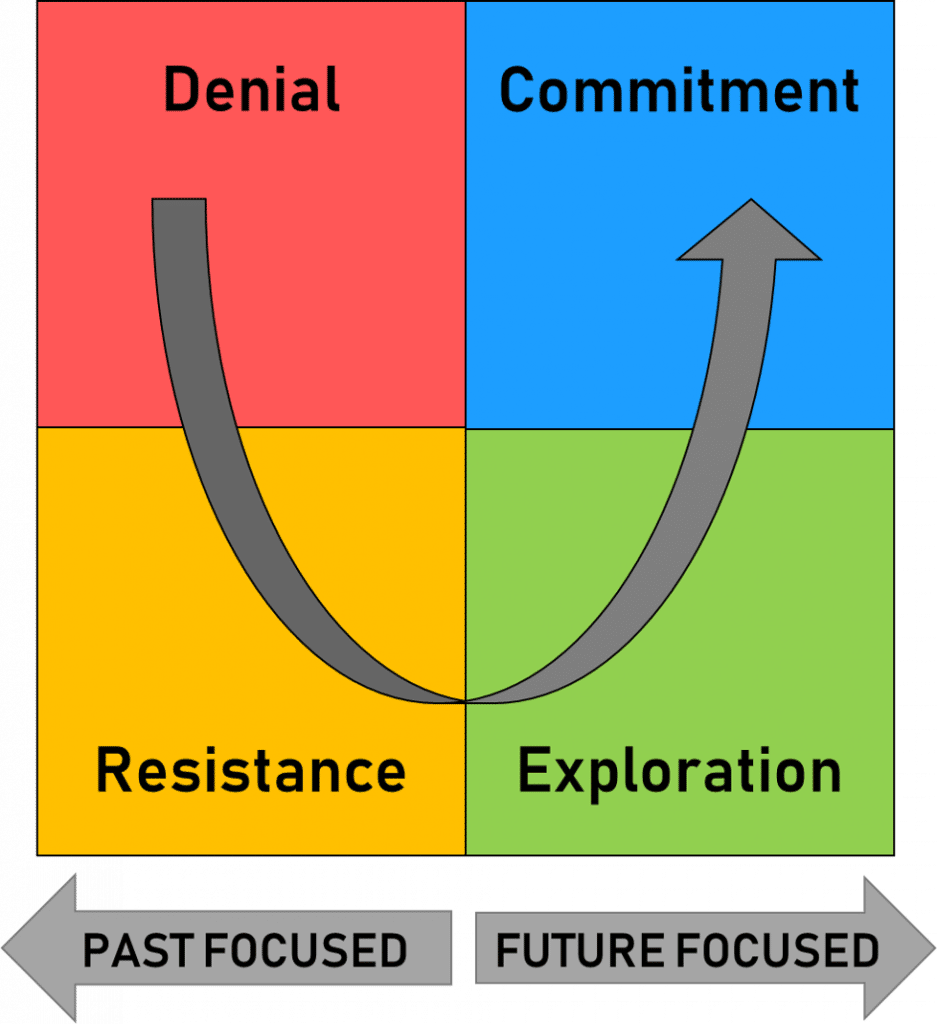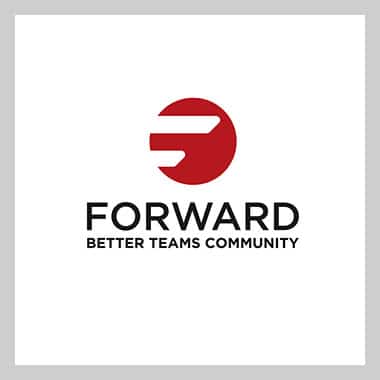It’s human nature to resist change because we are wired to protect ourselves for survival and our bodies experience change as a threat.
Leaders and teams must often respond to changes that are “inflicted” upon them. It’s the nature of our world which is changing faster and faster each year.
Too often, we expect teams to just “buck up” and move forward quickly, but they aren’t always emotionally ready to embrace the change.
To complicate things, professionals often mask their true feelings about a change to avoid being perceived as negative or weak. From the outside it may seem like a team of professionals are fine with the change, when often the truth is they are unhappy, anxious, and overwhelmed. Because they outwardly demonstrate openness to the change, we may wrongly assume they are further along in the change curve than they really are.
If a change is significant, it’s wise to assume that people need time and space to process what is happening to get on board. Just because they say they are on board from the beginning, doesn’t mean they really are.
Acknowledging that denial and resistance are a normal part of the change cycle and allowing the team to process this in a healthy way can relieve some hidden tensions and might even draw out legitimate concerns that need to be addressed.
Below you will see a modification of William Bridges model of transitions from his book Managing Transitions: Making the Most of Change. I find the simplicity of this model very helpful.

Here are some ideas and questions to coach people through each Phase of Change:
Denial
A person in denial has not accepted the change to be certain. It’s not real to them yet, because they are still coming to terms that this change is happening. They are clinging to the past and how things have been.
Ways to support someone in Denial:
- Explain the change as many times as needed for them to hear and understand it.
- Listen to their feelings and empathize.
- Give them time and space to work through their feelings.
Coaching questions for someone in Denial:
- What did you hear me say about the change?
- What do you dislike about the change? What do you like about it?
- What would you like to know more about this change?
- How are you feeling about this change?
Resistance
Once the person accepts that the change is happening, they typically are not happy about it at first. The change is stressful for them and the person prefers comfort and the status quo. They might fear what the new change will bring, or they may just miss the certainty of knowing what to expect (even if the old way is not particularly positive). In this stage, a person may go inward and appear to be shut down, or they may express their concerns openly and point out all the reasons they don’t like the change. This stage is often unpleasant for everyone.
Ways to support someone in Resistance:
- Empathetically listen to their thoughts and feelings about the change.
- Encourage them to see the change from different points of view.
- Allow them time and space to work through their feelings.
- Draw them into dialogue to explore their thoughts and feelings.
Coaching questions for someone in Resistance:
Note: These questions move from feeling to thinking questions. First, they need to process emotions, then we want them to start to think logically about the change to move them closer to exploration.
- How do you feel about the change?
- What are your concerns about this change?
- What do you think about this change?
- What are the benefits of this change?
- What would you like to know more about this change?
- How can I support you as you process this change?
Exploration
In this phase, the individual begins to investigate the situation and look toward the future. They explore possibilities and new information. Here they start to figure out how they can make this change work. Toward the later parts of exploration, they gain more certainty and confidence. They also become more and more open and maybe even excited about the change.
Ways to support someone in Exploration:
- Encourage them to set small goals to learn and prepare for the change.
- Acknowledge their growth mindset and positive attitude.
- Continue to check in about their feelings and concerns.
- Find out what type of support they need and provide it.
Coaching questions for someone in Exploration:
- What will help you prepare for this change?
- What is your next step in preparing or adapting to this change?
- What information, resources, or training do you need?
- How are you feeling about this change?
- What are the benefits of this change?
Commitment
In this final phase, individuals have not only accepted the change, but they have adapted to the change. The change is no longer new and unfamiliar. It is now the new normal.
Ways to support someone in Commitment:
- Celebrate the effort and progress of individuals and the team.
- Debrief the experience and identify lessons learned.
- Identify the next steps proactively.
Coaching questions for someone in Commitment:
- What are you most proud of as you were working through this change?
- How did you work through this change?
- How did you help others along the way?
- What are some lessons learned through this process?
- What other changes are on our horizon that we can proactively prepare for?
Summary:
Change is challenging, and it is constant, so we need effective tools to coach others through the process. Identifying the Phase of Change (Denial, Resistance, Exploration, or Commitment) a person is in is the first step. The next step is to adapt your actions and questions to support the individuals. Helping each person progress through the phases to arrive at commitment is your ultimate aim.
About the Author: Leigh Ann Rodgers, Founder of Better Teams and Forward, is an IAF Certified Professional Facilitator with 20 years of experience in the human development field. Leigh Ann is a skilled meeting facilitator, trainer, and coach working across the globe to help leaders cultivate teams that are happy and high-performing.
Learn. Share. Practice. Move FORWARD. Join the Better Teams community, FORWARD, to network and grow with some of the most experienced professionals in the field of team building and facilitation. LEARN MORE


One Response
Great information; thank you!